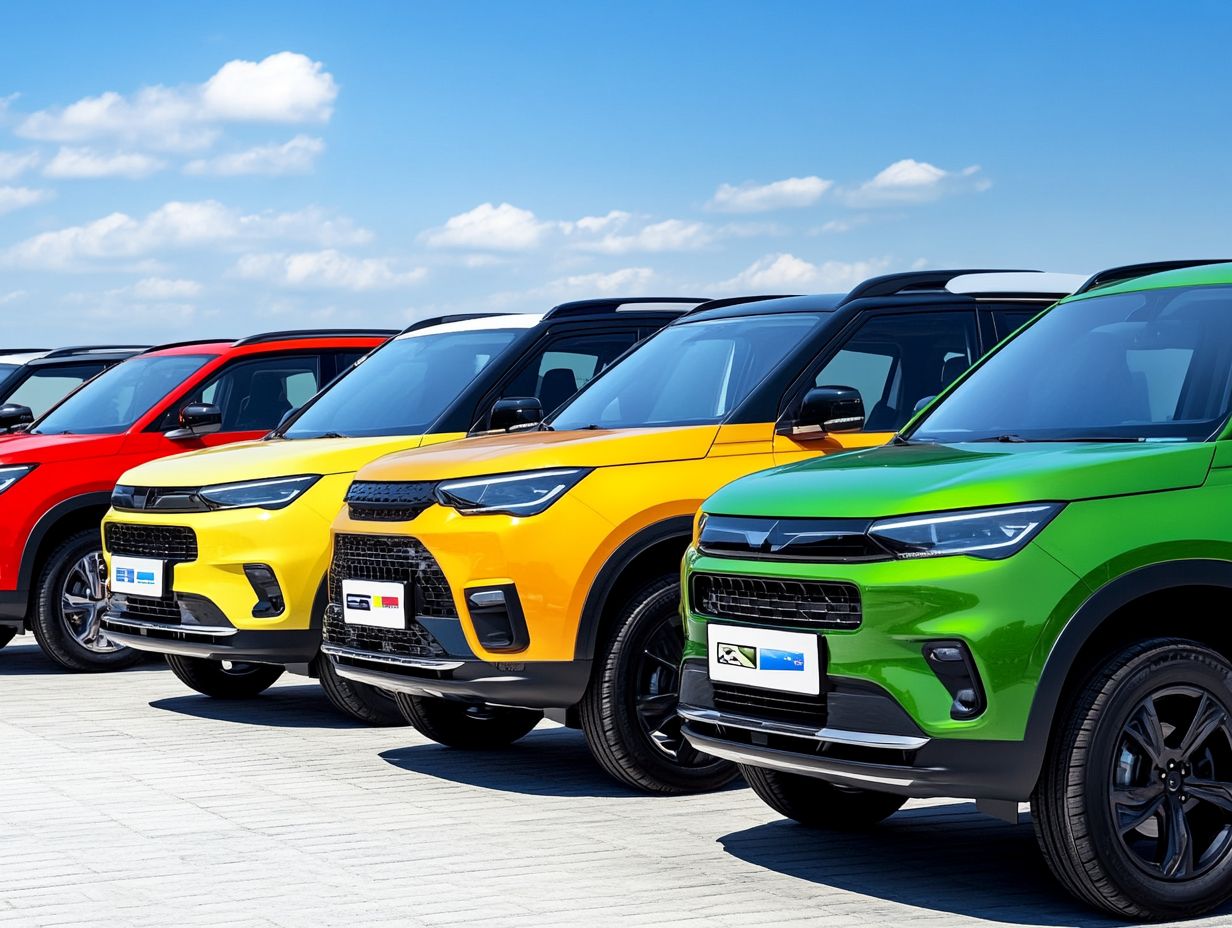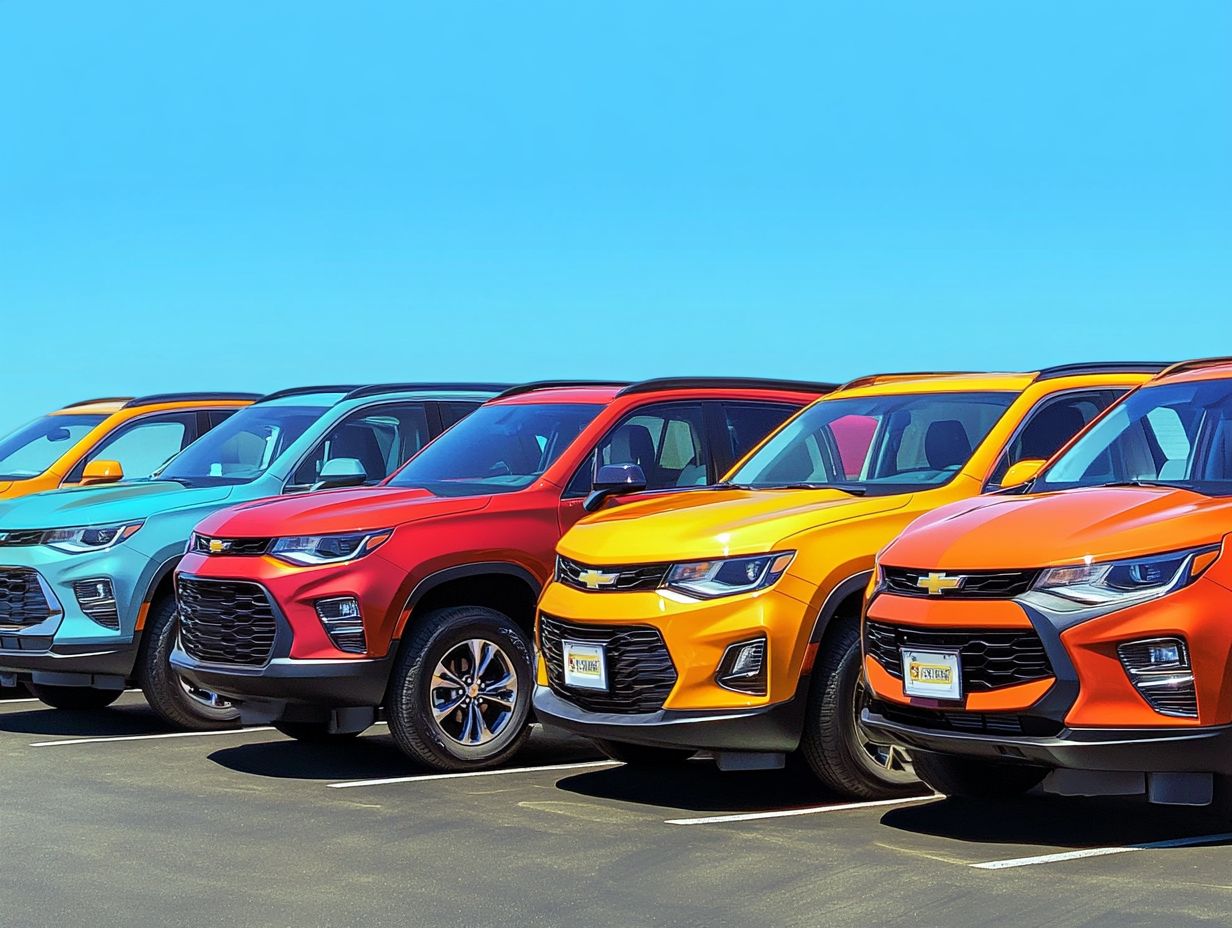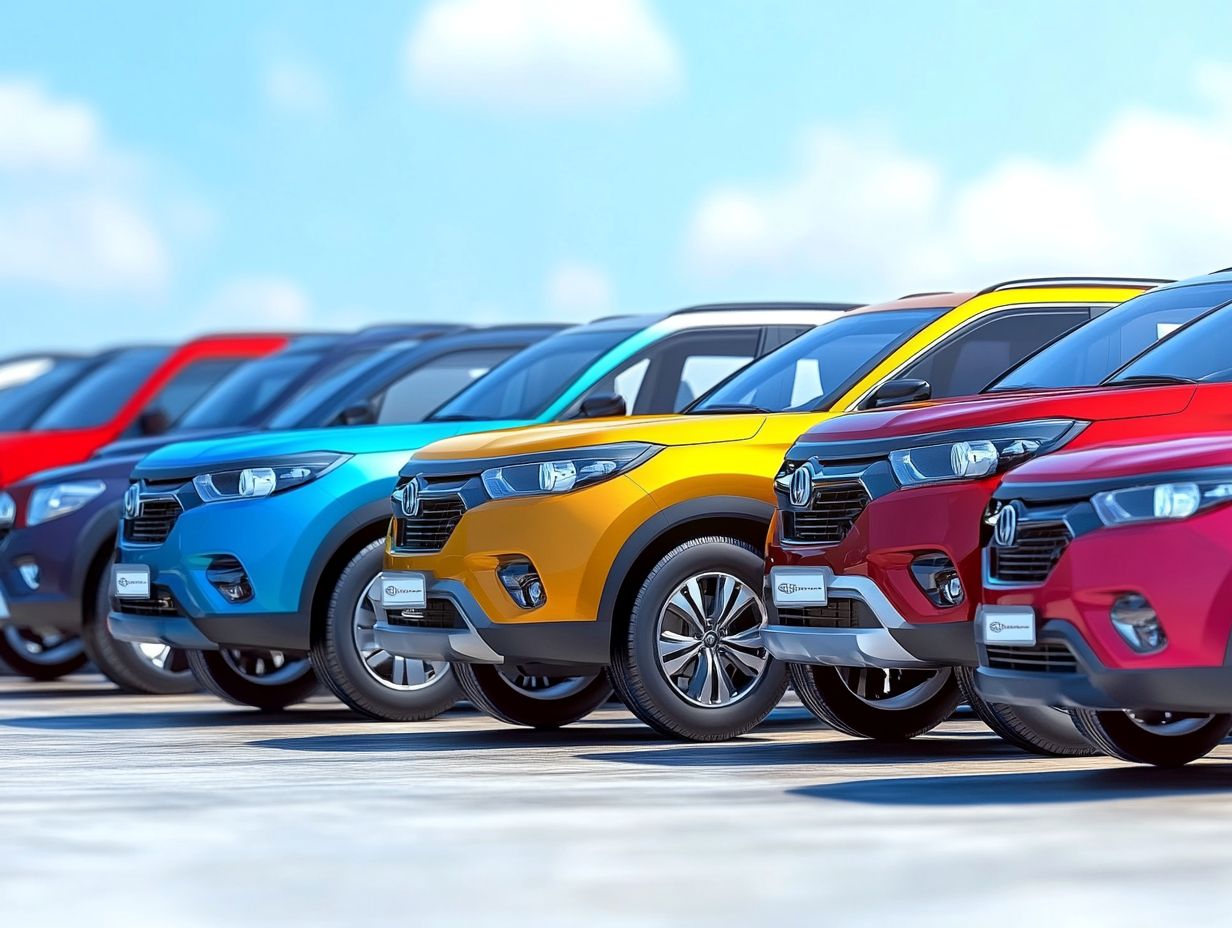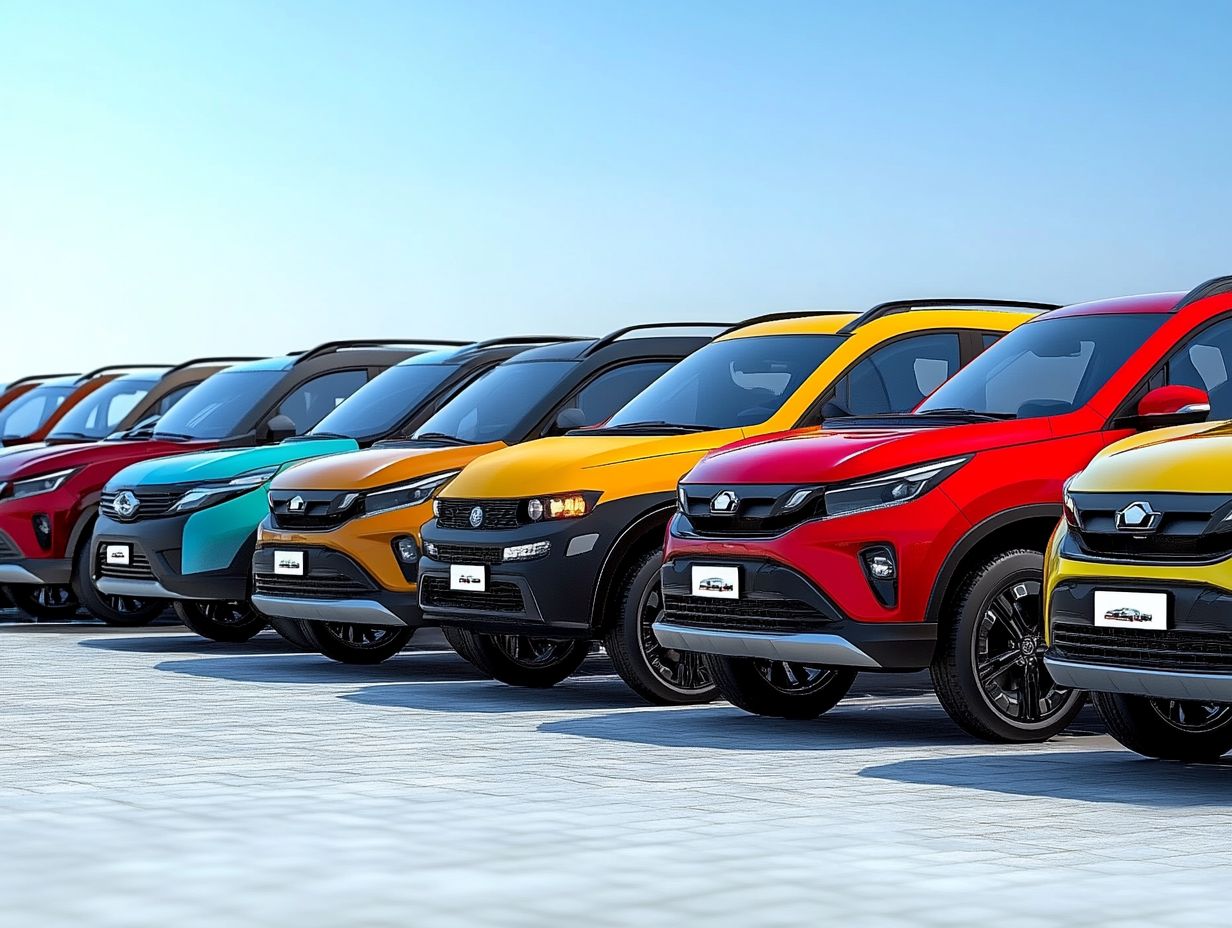Safety Ratings of Popular SUVs: What to Know
When it comes to selecting an SUV, prioritizing safety is crucial. With an array of options at your fingertips, navigating safety ratings can feel daunting.
This guide distills the key elements of SUV safety. It covers everything from testing methods and top-rated models to essential features you should keep an eye out for.
Dive into the factors that impact safety ratings. Discover practical tips to incorporate this knowledge into your decision-making process.
Your family’s safety matters most. Let’s make the best choice for their protection.
Contents
Key Takeaways:

- Always check for top-rated SUV models with high safety ratings to ensure your safety and that of your passengers.
- Look for key safety features such as adaptive cruise control, which helps maintain a set speed and distance from the car ahead, and lane departure warning, which alerts you if you start to drift out of your lane.
- Consider factors like vehicle design and technology when reviewing safety ratings. Use them as a tool in your decision-making process.
Understanding Safety Ratings for SUVs
Understanding safety ratings for SUVs is essential for you as a consumer. These ratings are provided by the National Highway Traffic Safety Administration (NHTSA). They include critical metrics like crash protection ratings, ease of use ratings, and overall vehicle scores.
The NHTSA meticulously categorizes vehicles based on their safety performance. They focus on passenger car categories, including SUVs. This ensures that you have all the information you need to make informed decisions about your vehicle choices.
Overview of Safety Ratings and Testing Methods
The NHTSA utilizes a range of crash testing methods to assess vehicle safety. These include frontal crash tests and side crash ratings. All of these culminate in complete safety ratings for vehicles.
These evaluations are essential for you as a consumer. They enable you to make informed decisions when purchasing a vehicle. Various testing parameters showcase the resilience of a car’s structure during impacts. They also provide valuable insights into tire quality grading and ease of use ratings.
The tire quality grading system assesses traction and temperature resistance. It ensures you’re aware of potential risks linked to different tire models. Ease of use ratings concentrate on the accessibility and convenience of vehicle features for everyday drivers. This enhances your overall driving experience.
Through these diligent testing mechanisms, the NHTSA is dedicated to fostering safer roads for everyone.
Top-Rated SUVs for Safety
Regarding safety, top-rated SUVs often achieve the prestigious 5-Star Safety Ratings from the NHTSA. These ratings are essential for you as a consumer looking for peace of mind in your vehicle choices.
This is especially true if you notice a safety concern symbol. It indicates an increased risk of serious injury in crashes.
Models with High Safety Ratings

Several models from prestigious manufacturers like Ford, Toyota, Hyundai, Nissan, Genesis, Mazda, and Volkswagen consistently achieve high safety ratings from the NHTSA. This provides you with peace of mind for both drivers and passengers.
These vehicles come equipped with cutting-edge safety technologies. These include automatic emergency braking, lane-keeping assist, and adaptive cruise control. All of these significantly enhance their protective capabilities.
For instance, the Ford Explorer boasts a comprehensive suite of driver-assistance features. This makes it an excellent choice for families. The Toyota RAV4 shines in crash test performance. It frequently earns top marks thanks to its meticulously engineered structure and extensive airbag systems. Similarly, the Hyundai Santa Fe impresses with a blend of sturdy construction and innovative safety features. These offer reassurance during every journey.
Common Safety Features in SUVs
Common safety features in SUVs typically encompass advanced systems designed to elevate vehicle safety ratings. These may include electronic stability control, multiple airbags, and exceptional crash protection ratings. All of these are acknowledged by the NHTSA.
Before you decide on your next SUV, check the latest safety ratings to ensure your family travels safely!
Key Features to Look for in a Safe SUV
When you’re in the market for a safe SUV, it s crucial to focus on key features like 5-Star Safety Ratings and impressive crash test results. Advanced safety technologies are designed to reduce the risk of serious injury during a collision.
Beyond these essential factors, examine the vehicle s overall structural integrity. Look for driver-assistance technologies, such as a system that automatically adjusts your vehicle’s speed to maintain a safe distance from the car in front of you, and automatic emergency braking. Using online vehicle comparison tools can be a game-changer, offering valuable insights that help pinpoint standout safety features among various models.
Don t overlook customer feedback and expert reviews. They provide crucial information about real-world performance and help you make informed choices prioritizing safety for your next SUV.
Factors That Affect SUV Safety Ratings
The safety ratings of SUVs are influenced by several key factors, including the design of the vehicle and advancements in technology. The comprehensive evaluation methods utilized by the NHTSA also play a significant role.
These assessments rigorously test each model for crash protection ratings and overall performance, ensuring that you have access to reliable safety information.
How Vehicle Design and Technology Impact Safety

Vehicle design and technological advancements play a crucial role in safety ratings. Manufacturers leverage innovative materials and systems that enhance crash testing outcomes, ultimately leading to improved NHTSA safety ratings.
The use of high-strength steel and advanced composite materials not only reduces vehicle weight but also effectively absorbs energy during collisions, providing vital protection for occupants.
Intelligent safety technologies, such as advanced driver-assistance systems (ADAS) like lane-keeping assist and blind-spot monitoring, offer essential support to drivers and significantly reduce the likelihood of accidents.
These elements converge to create a more robust safety environment in modern SUVs, instilling confidence in consumers while ensuring adherence to stringent safety regulations established by authorities.
How to Use Safety Ratings When Choosing an SUV
Using safety ratings when choosing an SUV makes the process easier and smarter! By tapping into resources like the NHTSA safety ratings and the vehicle comparison tool, you can pinpoint Top Safety Picks and understand the importance of 5-Star Safety Ratings.
This knowledge enables you to make informed choices that prioritize safety without sacrificing style or performance.
Tips for Using Safety Ratings in Your Decision-Making
When making decisions based on safety ratings, consider leveraging the vehicle comparison tool offered by NHTSA. This resource allows you to analyze crash protection ratings and evaluate the serious injury risk associated with various SUV models.
With this tool, you can scrutinize essential data like rollover resistance and overall vehicle ratings. This makes it easier to pinpoint models that meet or surpass safety standards.
To deepen your understanding, delve into customer reviews and expert ratings. These insights often shed light on real-world performance and user experiences.
Stay informed about recalls and safety announcements from the manufacturer to ensure the model you choose incorporates the latest safety advancements. Making informed choices leads to safer driving experiences.
Frequently Asked Questions
What safety ratings should I look for in popular SUVs?

The safety ratings of popular SUVs can vary, as they are determined by organizations such as the National Highway Traffic Safety Administration (NHTSA) and the Insurance Institute for Highway Safety (IIHS). It’s important to research specific SUV models to see their individual safety ratings.
How are safety ratings of SUVs determined?
Safety ratings are determined through crash tests, including front, side, and rollover tests. They evaluate factors like how well a vehicle protects its passengers.
What do the safety ratings mean?
Safety ratings inform consumers about a vehicle’s ability to protect occupants in crashes. A higher rating means better chances of survival and fewer injuries.
Which SUVs have the best safety ratings?
Top-rated SUVs include the Volvo XC60, Subaru Forester, and Toyota RAV4. Always check the specific ratings for the model and year you re considering.
Are there any SUVs with poor safety ratings?
Most modern SUVs perform well, but some have lower ratings due to various reasons. Research safety ratings thoroughly if safety is your top priority.
How can I use safety ratings to make an informed car purchase decision?
Review safety ratings to compare features and performance among different SUVs. You should also consider price, fuel efficiency, and reliability in your decision.
Don t overlook safety research ratings before you buy! Find Your Safe SUV Today!



